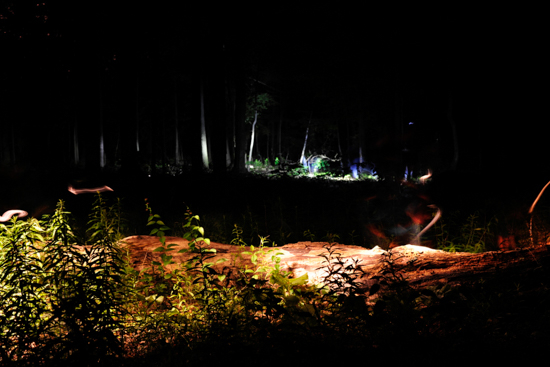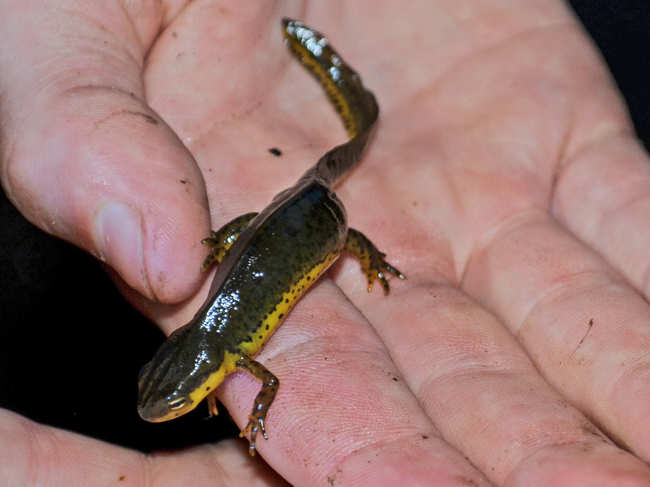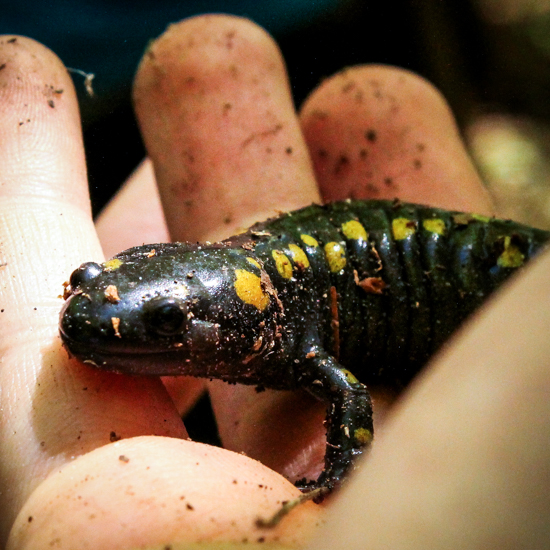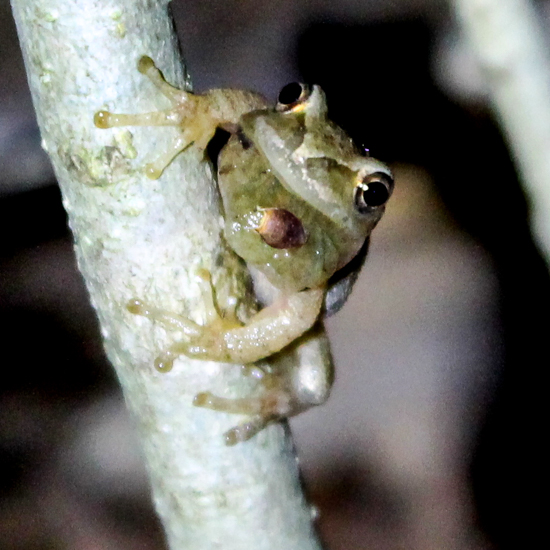BioBlitz Bits - Night of the Newts and Salamanders

Blog by ROM Herpetology Technician Amy Lathrop
This is the first of our "BioBlitz Bits" Series - ROM scientists share their favourite stories from past Ontario BioBlitz events
My favourite moment from last year's Ontario BioBlitz in the Humber River Watershed would have to when me and some members of the herps team were out surveying during the night. At around 10:00PM, a group of us walked into the forest, following the calls and chirps of frogs - some of the animals I work with regularly as a herpetologist, i.e. a biologist who studies amphibians and reptiles. As we picked our way through the undergrowth, the group was a bit startled as a huge porcupine climbed up a tree nearby. When we saw it, I thought to myself, "this is going to be a great spot!".
Sure enough, I was right, because just a short distance ahead, we came across some small ephemeral ponds - exactly what we were looking for. These types of ponds will actually disappear in the summer time as the forest dries up. As we looked inside the pond, to our excitement, we found TONS of salamander eggs. These look like swollen jelly capsules that surround tiny developing baby salamanders. The eggs were motionless until we put our lights up to them, then you could see them wiggle in the light. Apparently we had just missed a pretty big mating event, probably by only about 24 hours! The only salamanders that we saw moving around in the forest ponds were some Eastern Newts. The salamanders that had laid the eggs were long gone... it was like showing up at the end of a great party, only to find the newts cleaning up the empties.

Based on the habitat that we found them, the eggs could be from one of three possible species: the Jefferson salamander, Ambystoma jeffersonianum, Spotted salamander, Ambystoma maculatum, or the blue spotted salamander, Ambystoma laterale. If I were to hope for the eggs to be from one species over the others, I'd hope they were laid by some Jefferson salamaders, because these guys are listed as a Threatened species in Ontario and the federal Species At Risk Act. They are rarely seen because they tend to dig holes and spend most of their time underground, surfacing only once a year to breed.
It’s always a thrill to find species like these salamanders breeding so close to the city, but we have to keep in mind that Jefferson Salamander habitat is also rapidly being developed. However, it's not too late for these little guys yet, because getting people out for events like the Ontario BioBlitz gets participants acquainted with their wilder neighbours, like salamanders! If you’re joining us for the flagship Ontario BioBlitz in the Don River Watershed this year, from June 13-14, you can expect to see some other cool herp species, like the Red Back Salamander, Eastern Newt, Spotted Salamander, and even some frogs, like the Spring Peeper.


